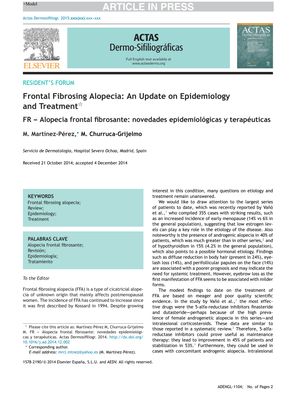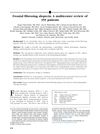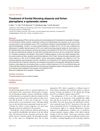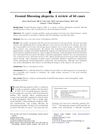Frontal Fibrosing Alopecia: An Update on Epidemiology and Treatment
October 2015
in “
Actas Dermo-Sifiliográficas
”
Frontal Fibrosing Alopecia scarring alopecia postmenopausal women hormonal etiology androgenic alopecia hypothyroidism 5-alfa-reductase inhibitors finasteride dutasteride intralesional corticosteroids eyebrow involvement oral antimalarials topical calcineurin inhibitors systemic treatments lichen planopilaris oral ciclosporin rituximab pioglitazone FFA Propecia Avodart corticosteroids antimalarials calcineurin inhibitors ciclosporin Actos

TLDR New treatments for Frontal Fibrosing Alopecia show promise, especially finasteride and dutasteride, with most patients seeing improvement or stabilization.
The document discusses Frontal Fibrosing Alopecia (FFA), a type of scarring alopecia primarily affecting postmenopausal women, with its incidence on the rise since first described in 1994. The largest series of FFA patients, comprising 355 cases, revealed an increased incidence of early menopause and a potential hormonal etiology for FFA, with 40% of patients also having androgenic alopecia and 15% hypothyroidism. Treatment outcomes are based on limited and low-quality evidence, but 5-alfa-reductase inhibitors like finasteride and dutasteride showed improvement or stabilization in 98% of patients, particularly useful in those with concurrent androgenic alopecia. Intralesional corticosteroids were partially effective in 60% of patients and especially successful in eyebrow involvement. Other treatments like oral antimalarials, topical calcineurin inhibitors, and various systemic treatments showed lower efficacy. Drugs effective for lichen planopilaris, a condition considered clinically similar to FFA, may be promising for future FFA treatments, with oral ciclosporin and drugs like rituximab and pioglitazone showing potential in clinical trials.



